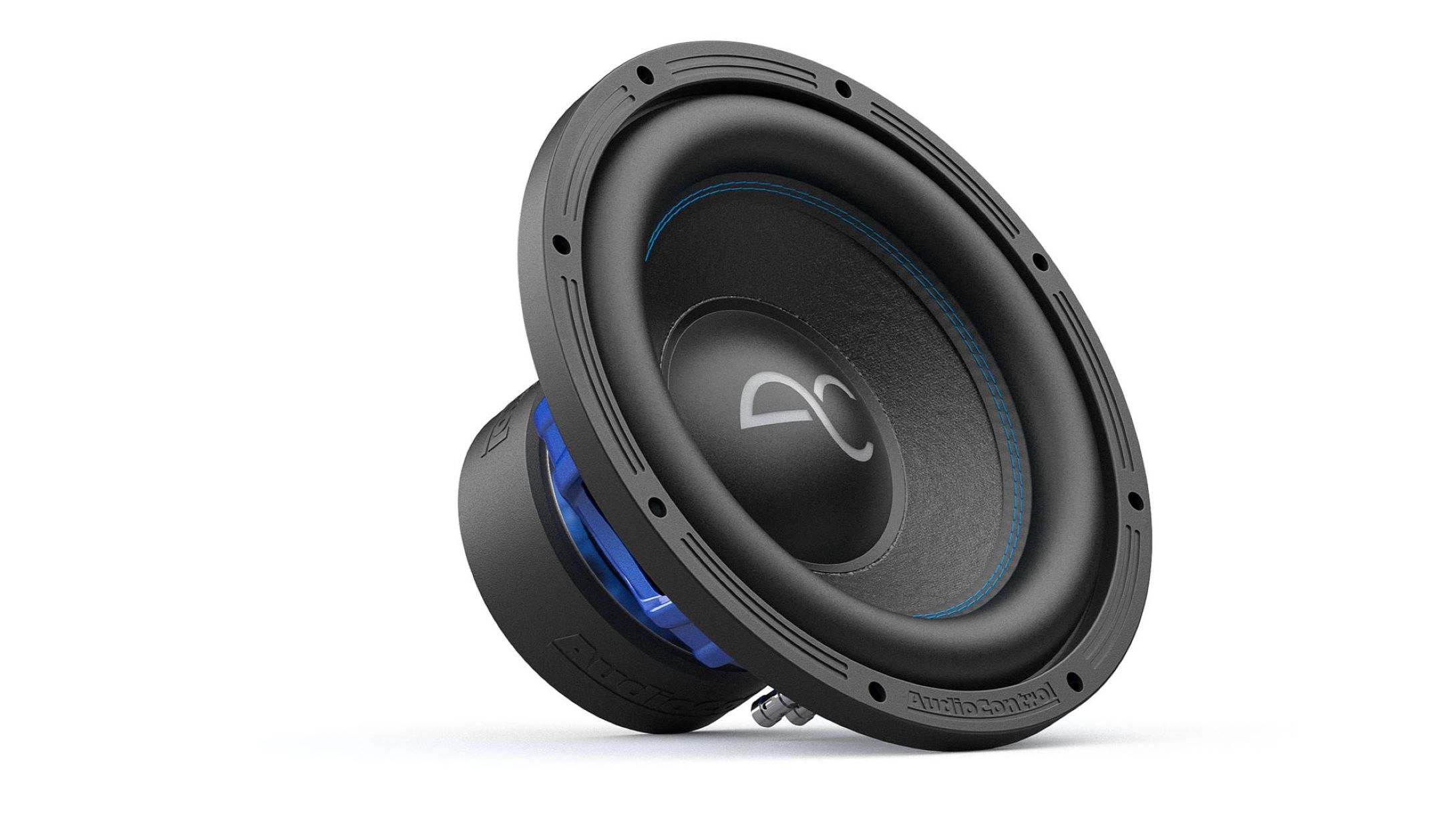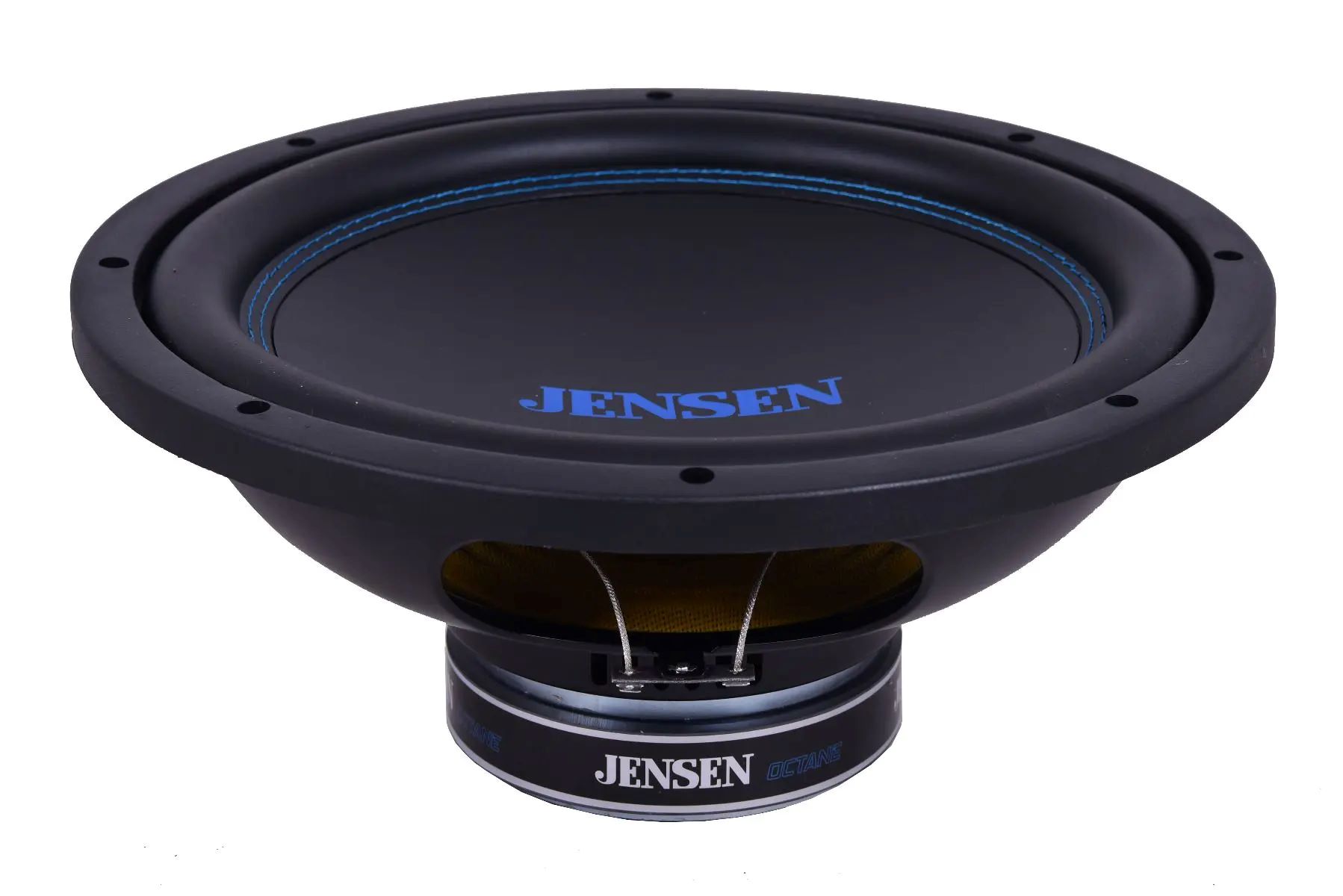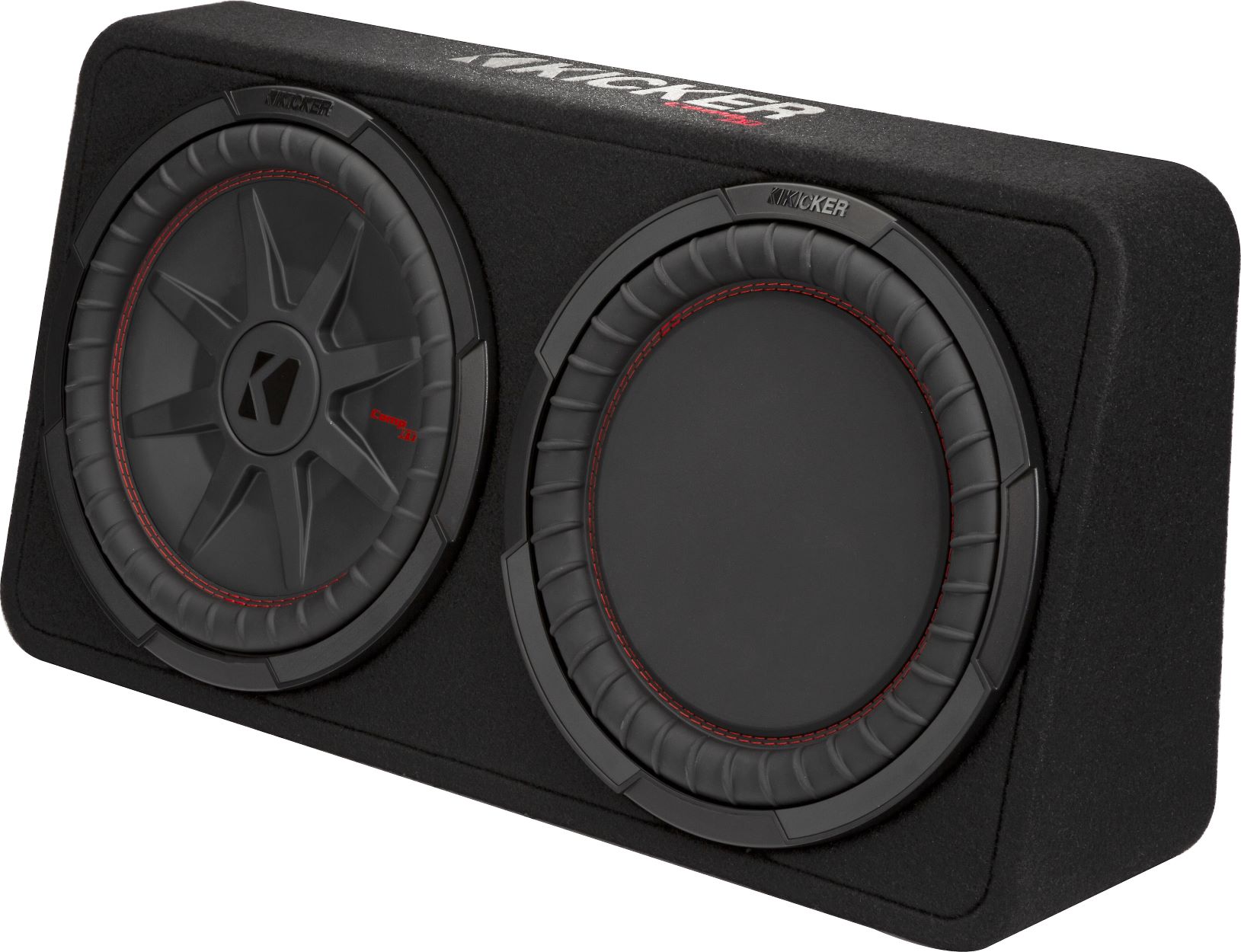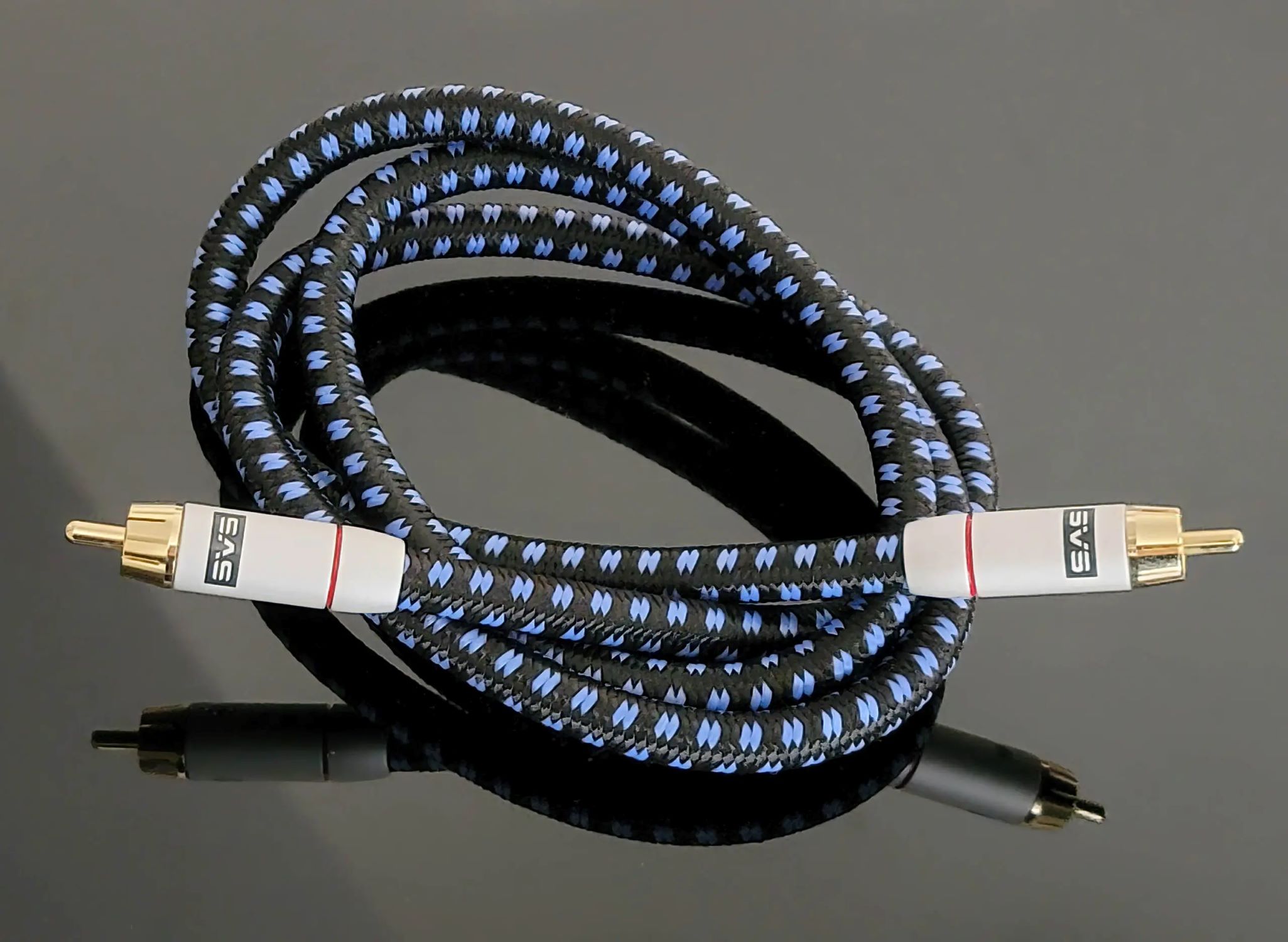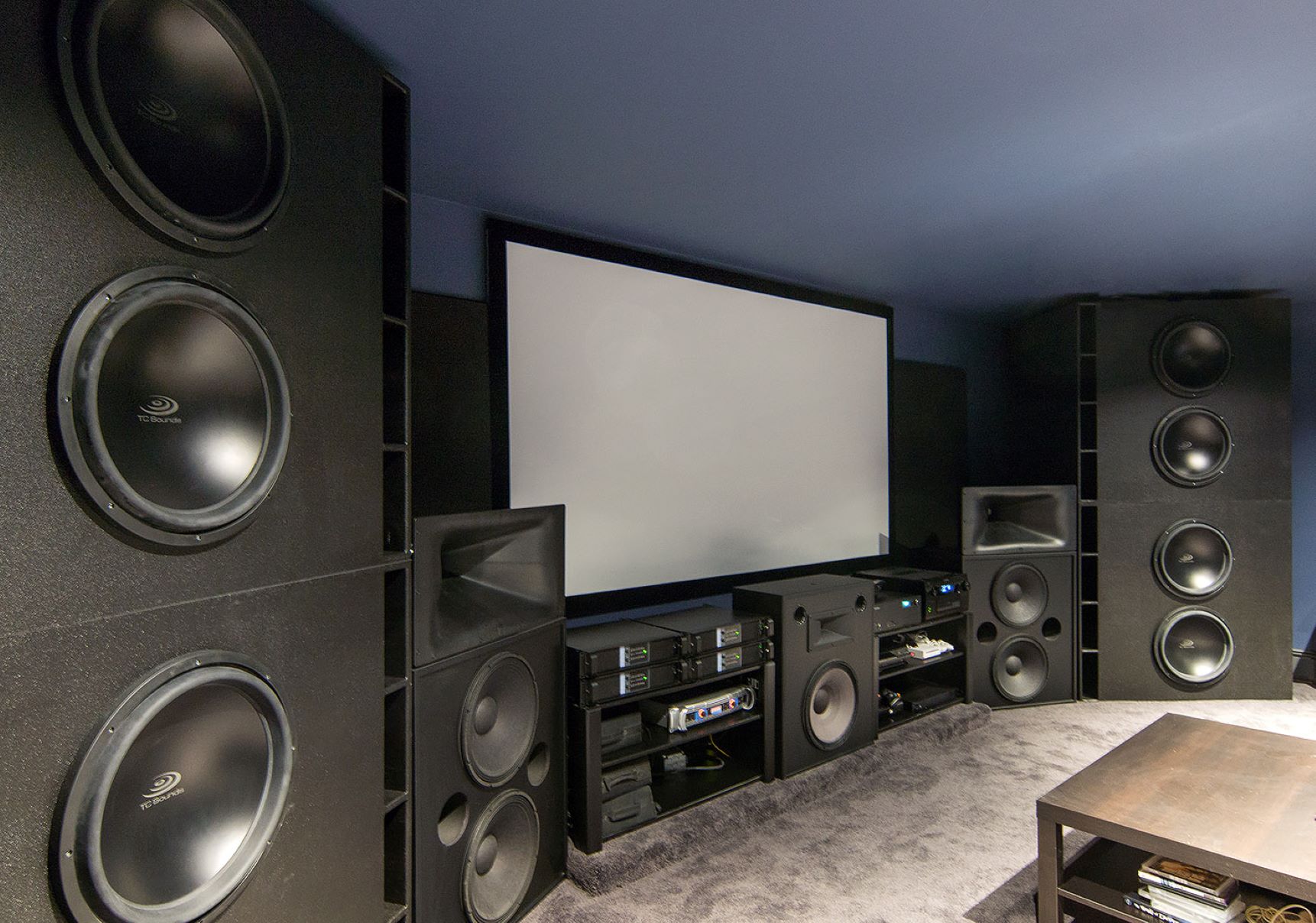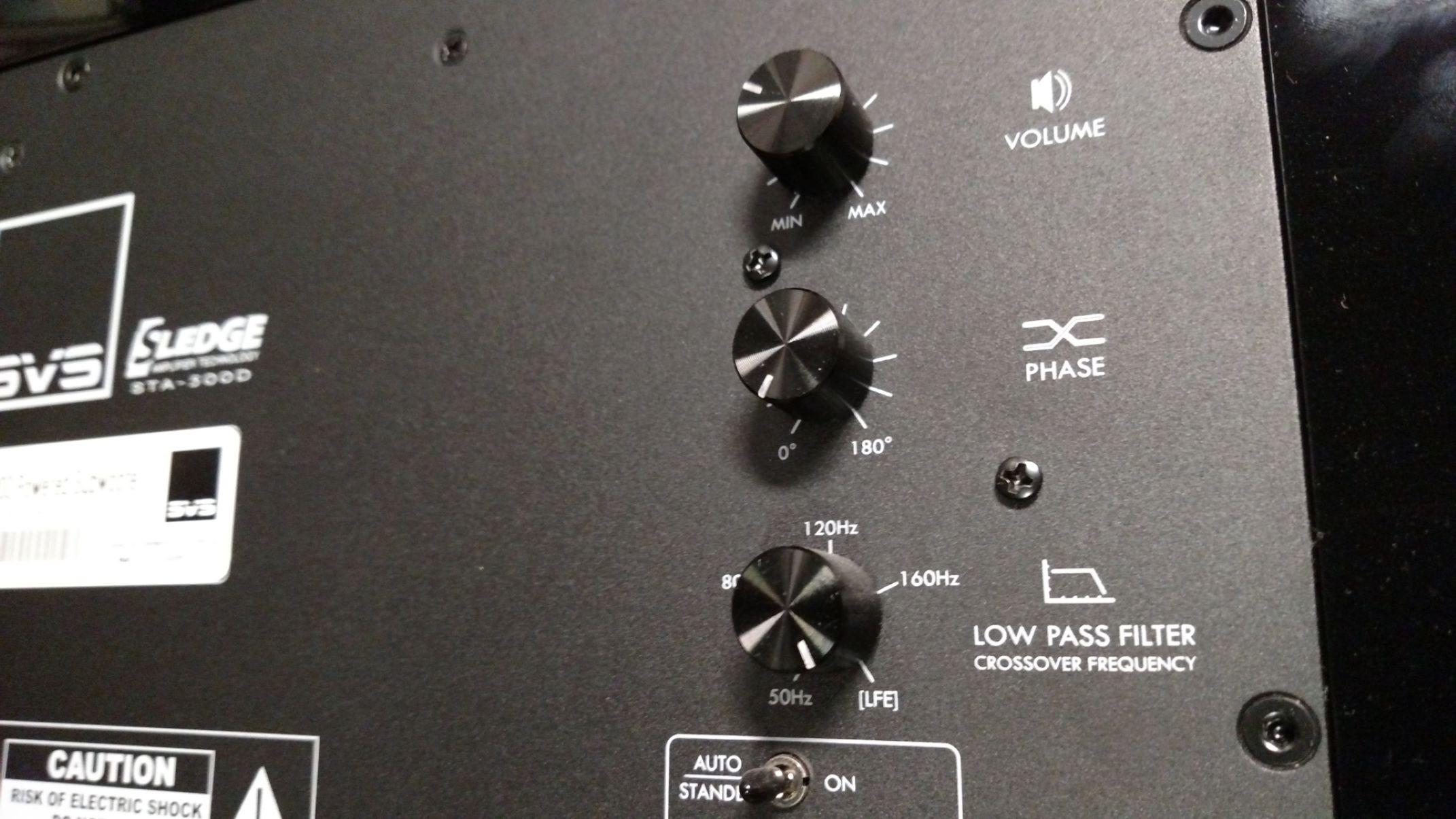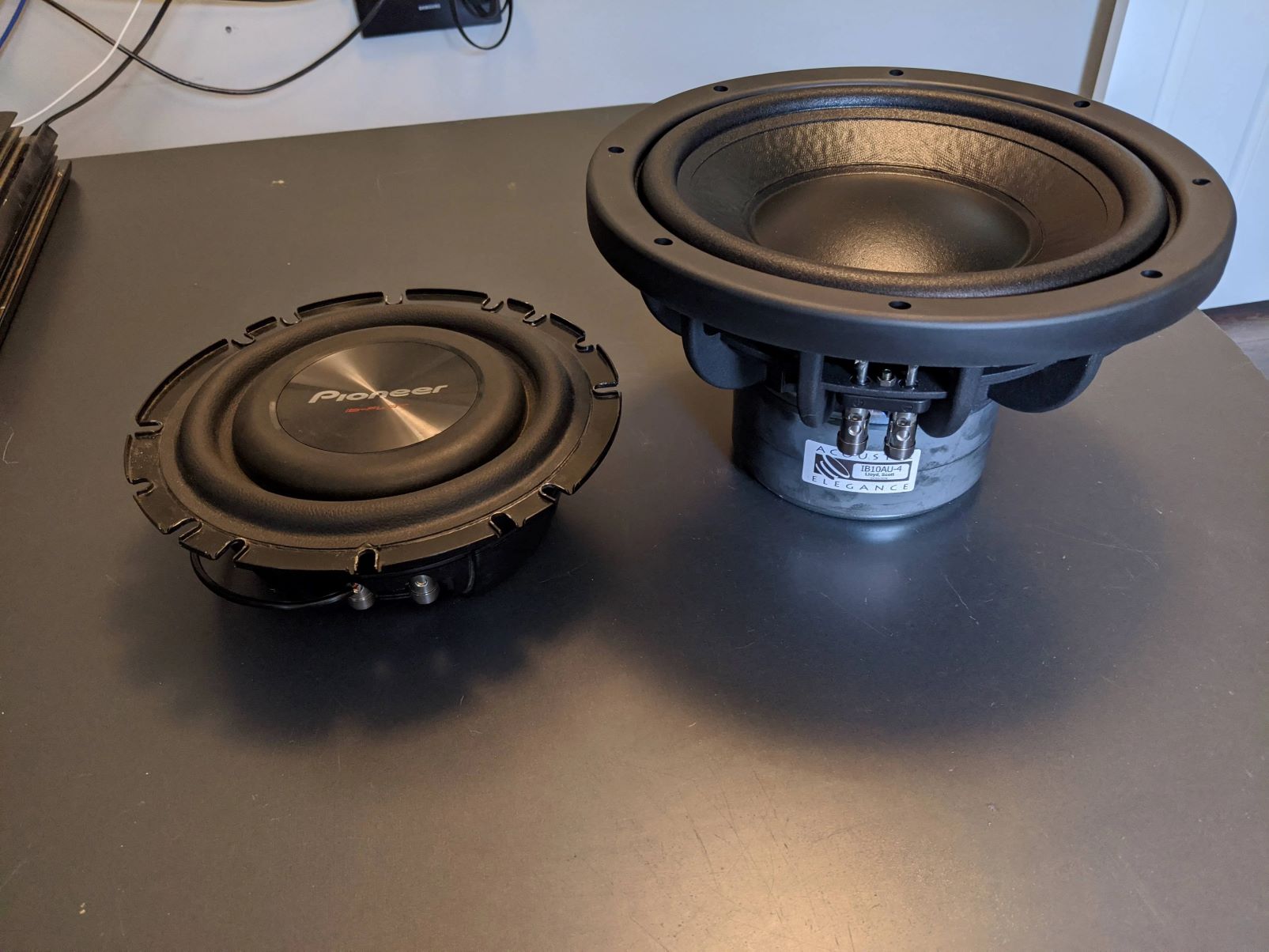Home>Devices & Equipment>Subwoofer>What Is Subwoofer Sensitivity
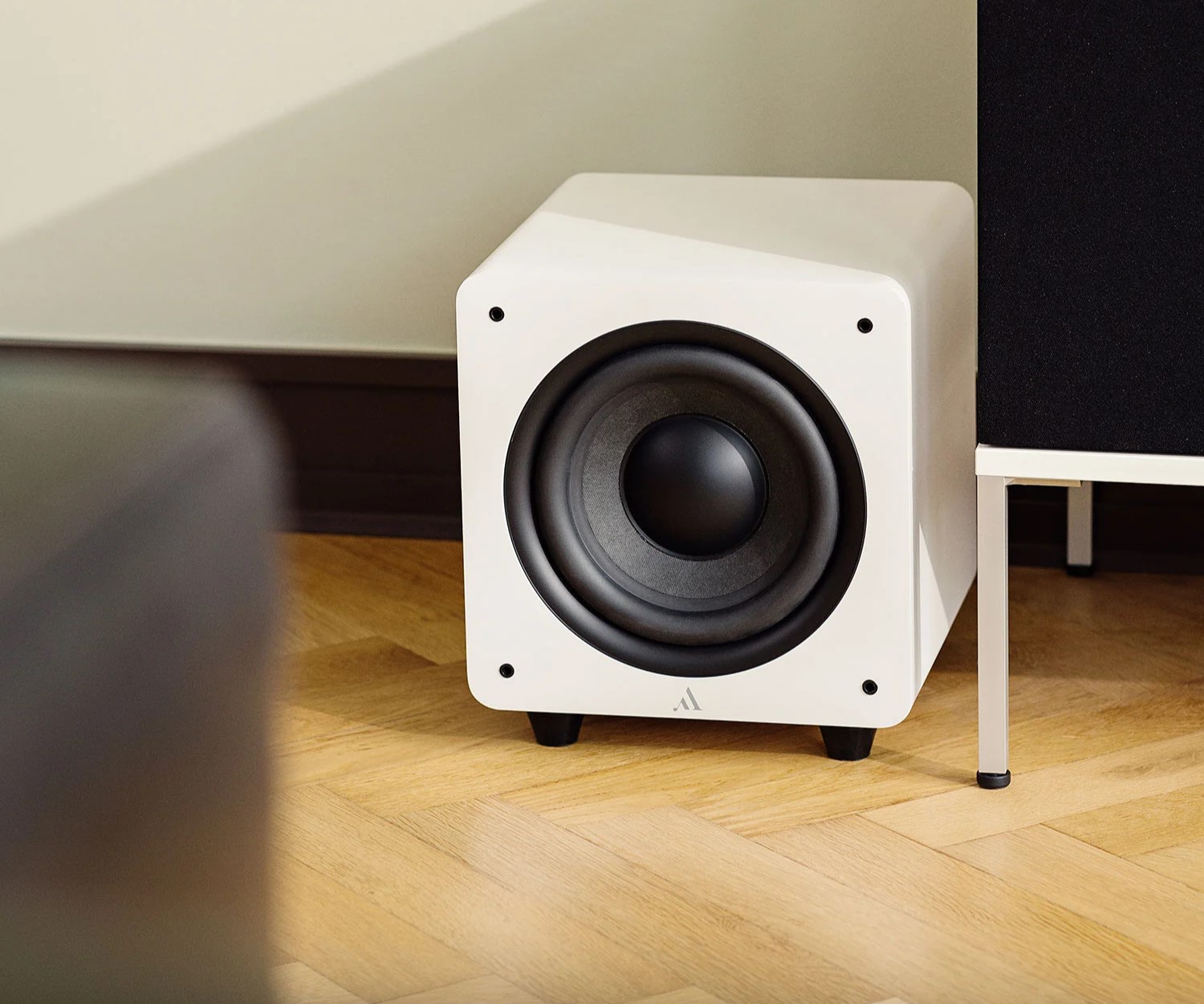

Subwoofer
What Is Subwoofer Sensitivity
Published: January 23, 2024
Learn about subwoofer sensitivity and how it affects the performance of your audio system. Discover the key factors to consider when choosing a subwoofer for optimal sound quality.
(Many of the links in this article redirect to a specific reviewed product. Your purchase of these products through affiliate links helps to generate commission for AudioLover.com, at no extra cost. Learn more)
Table of Contents
Introduction
Welcome to the world of deep bass and booming sound! Subwoofers are an essential component of any audio system, providing the low-frequency response necessary for a truly immersive audio experience. But did you know that not all subwoofers are created equal? One important factor to consider when choosing a subwoofer is its sensitivity.
Subwoofer sensitivity refers to how efficiently a subwoofer converts power into sound. It is measured in decibels (dB) and represents the sound output at a given power level. In simple terms, the higher the sensitivity rating, the louder the subwoofer will be at a given amount of power.
Understanding subwoofer sensitivity is crucial because it directly affects the performance and overall sound quality of your audio system. Choosing the right subwoofer sensitivity can make a significant difference in both the depth and clarity of the bass reproduction.
In this guide, we will explore the intricacies of subwoofer sensitivity, its importance, factors that affect it, how to measure it, and how to interpret the sensitivity ratings. By the end, you will have a comprehensive understanding of subwoofer sensitivity and be able to make an informed decision when selecting a subwoofer for your audio setup.
Definition of Subwoofer Sensitivity
Subwoofer sensitivity, also known as efficiency, is the measurement of how effectively a subwoofer converts electrical power into sound output. It indicates the volume level that a subwoofer can achieve with a specific input power. Sensitivity is measured in decibels (dB) and is typically provided by manufacturers in the product specifications.
The sensitivity rating of a subwoofer is an essential metric to consider when purchasing a subwoofer because it directly impacts its performance. A higher sensitivity rating indicates that the subwoofer is more efficient at converting power into sound and will produce louder bass levels with the same amount of input power. Conversely, a lower sensitivity rating means that the subwoofer requires more power input to achieve the same loudness.
Subwoofer sensitivity is typically measured by placing the subwoofer in an anechoic chamber, which is a room designed to eliminate echoes and external sound reflections. The subwoofer is then fed with a specific input power, and the sound level is recorded at a defined distance from the subwoofer. This recorded sound level is used to determine the sensitivity rating.
It’s important to note that sensitivity alone does not indicate the quality of the subwoofer. A highly sensitive subwoofer may be able to produce louder bass, but it doesn’t necessarily mean it will deliver better sound quality. Other factors like frequency response, distortion levels, and driver design also contribute to the overall performance of a subwoofer.
When considering subwoofer sensitivity, it’s essential to understand the reference point at which the sensitivity rating is measured. Most sensitivity ratings are measured at 1 watt of power input and are given in decibels (dB) with a reference distance of 1 meter. However, some manufacturers may provide sensitivity ratings at different power levels or distances, so it’s crucial to check the specifications to ensure accurate comparisons between different subwoofers.
Overall, subwoofer sensitivity is an important factor to consider when choosing a subwoofer for your audio system. It determines how loud and powerful the bass reproduction will be, allowing you to customize your listening experience based on your preferences and the size of your listening space.
Importance of Subwoofer Sensitivity
Subwoofer sensitivity plays a crucial role in the overall performance and sound quality of your audio system. Understanding its importance will help you make an informed decision when selecting a subwoofer. Here are some key reasons why subwoofer sensitivity matters:
- Efficiency: Subwoofer sensitivity directly relates to how efficiently the subwoofer converts electrical power into sound output. A higher sensitivity rating means that the subwoofer can produce louder bass with less input power. This efficiency is important, especially if you have a lower-powered amplifier or want to conserve energy.
- Dynamic Range: Sensitivity affects the dynamic range of the subwoofer. The dynamic range refers to the difference between the softest and loudest sounds that the subwoofer can reproduce. A subwoofer with higher sensitivity can accurately reproduce both subtle low-frequency details and powerful, deep bass notes, providing a more immersive and engaging audio experience.
- Bass Extension: Sensitivity also contributes to the bass extension of a subwoofer. A highly sensitive subwoofer can reproduce lower frequencies more effectively, providing a deeper and more impactful bass response. This is particularly important for audio enthusiasts who enjoy genres like electronic music, hip-hop, or action-packed movie soundtracks, where deep, rumbling bass is crucial.
- Compatibility: The sensitivity rating of a subwoofer helps you assess its compatibility with your amplifier or receiver. If you have a lower-powered amplifier, choosing a subwoofer with higher sensitivity ensures that you can achieve satisfactory bass levels without straining your amplifier. On the other hand, if you have a high-powered amplifier, a subwoofer with lower sensitivity can handle the additional power without distorting or overpowering the rest of the audio system.
- Room Size: Subwoofer sensitivity should also be considered in relation to the size of your listening room. A highly sensitive subwoofer can fill a larger room with deep bass more effectively compared to a subwoofer with lower sensitivity. Conversely, in smaller rooms, a subwoofer with lower sensitivity may be sufficient to avoid overwhelming the space with excessive bass.
It’s important to note that while subwoofer sensitivity is a significant consideration, it should not be the sole determining factor when choosing a subwoofer. Other factors like frequency response, build quality, and overall design should also be taken into account to ensure a well-rounded audio system. Strike a balance between sensitivity and the other technical specifications that match your listening preferences for the best audio experience.
Factors Affecting Subwoofer Sensitivity
Subwoofer sensitivity is influenced by a variety of factors that can impact the overall performance and sound quality of the subwoofer. Understanding these factors will help you make informed decisions when selecting a subwoofer for your audio setup. Here are some key factors that can affect subwoofer sensitivity:
- Driver Design: The design and construction of the subwoofer driver play a significant role in determining sensitivity. Factors such as the size, material, and the design of the woofer cone and voice coil can impact how efficiently the subwoofer converts power into sound. High-quality drivers with innovative design features tend to have better sensitivity.
- Enclosure Type: The type of enclosure used for the subwoofer can affect sensitivity. Sealed enclosures often provide higher sensitivity because they allow for better control of the air movement within the enclosure, resulting in improved bass response. On the other hand, ported or vented enclosures may sacrifice some sensitivity for enhanced low-frequency extension.
- Amplifier Power: The power provided by your amplifier or receiver can impact subwoofer sensitivity. Higher-powered amplifiers can drive subwoofers with lower sensitivity more effectively, allowing for louder bass output. Conversely, if you have a lower-powered amplifier, choosing a subwoofer with higher sensitivity ensures that you can achieve satisfactory volume levels without straining the amplifier.
- Room Acoustics: The acoustics of your listening room can have a significant impact on subwoofer sensitivity. Factors such as room size, shape, and the presence of reflective surfaces can affect how bass frequencies propagate and interact with the listening environment. Proper room treatment, including the use of bass traps and diffusers, can help optimize subwoofer sensitivity and improve overall sound quality.
- Crossover Settings: The crossover settings on your audio system also influence subwoofer sensitivity. The crossover determines the point at which the subwoofer takes over bass reproduction from the main speakers. Setting the crossover too high can result in the subwoofer struggling to produce lower frequencies effectively, leading to reduced sensitivity. Properly configuring the crossover ensures optimal integration and efficient bass reproduction.
- Environmental Factors: Environmental factors such as temperature and humidity can impact subwoofer sensitivity. Extreme temperatures or high humidity levels can affect the performance of the subwoofer driver and the overall efficiency of the subwoofer. It’s important to ensure that the subwoofer is placed in a suitable environment to maintain optimal sensitivity.
Keep in mind that these factors are interrelated and can vary depending on the specific subwoofer model and brand. When selecting a subwoofer, consider how these factors align with your preferences, listening environment, and overall audio system setup to ensure the best possible subwoofer sensitivity and performance.
How to Measure Subwoofer Sensitivity
Measuring the sensitivity of a subwoofer is an important step in understanding its performance capabilities. While it is typically done by manufacturers, you can also measure subwoofer sensitivity yourself by following these general steps:
- Set Up a Test Environment: Find a quiet and isolated space where you can measure the subwoofer’s output without any interference. It’s best to use an anechoic chamber if one is available. Alternatively, you can choose a large, open area outdoors to minimize any reflections.
- Set the Reference Level: Set the subwoofer’s level to a known reference value. This can be done using a decibel meter or a sound level meter. Make sure the meter is calibrated and set to the appropriate weighting (usually A-weighting for subwoofer measurements).
- Apply a Fixed Input Power: Connect a power source, such as an amplifier, to the subwoofer. Provide a fixed input power to the subwoofer, typically 1 watt. Ensure that the amplifier is set to a low, safe level to avoid damaging the subwoofer or the measurement equipment.
- Measure the Sound Output: Place the microphone of the sound level meter at a specific distance from the subwoofer. The distance is typically set to 1 meter to maintain consistency in sensitivity measurements. Record the sound level reading in decibels (dB).
- Calculate Sensitivity: Subtract the reference level (step 2) from the measured sound level (step 4) to obtain the sensitivity rating of the subwoofer. This rating indicates how many decibels the subwoofer produces at 1 watt and 1 meter.
Keep in mind that this method provides a rough estimate of the subwoofer sensitivity. The measurements can be influenced by various factors, such as room acoustics, equipment accuracy, and placement of the microphone. Additionally, different manufacturers may use slightly different methods and reference levels when measuring sensitivity, so the results may not be directly comparable.
If you want a more precise and accurate measurement of subwoofer sensitivity, it’s recommended to rely on the manufacturer’s specifications or consult professional audio testing facilities that have the necessary equipment and expertise to provide comprehensive measurements.
Remember, subwoofer sensitivity is just one aspect to consider when choosing a subwoofer. It’s essential to consider other factors, such as frequency response, power handling, and overall sound quality, to ensure that the subwoofer meets your audio requirements and preferences.
Interpreting Subwoofer Sensitivity Ratings
Interpreting subwoofer sensitivity ratings is crucial to understanding the performance capabilities of a subwoofer and determining its suitability for your audio system. Here are a few key points to consider when interpreting sensitivity ratings:
- Decibel (dB) Rating: Subwoofer sensitivity is expressed in decibels (dB). The sensitivity rating indicates the sound level produced by the subwoofer at a specific input power level and distance. Generally, higher sensitivity ratings indicate louder sound output for a given amount of input power.
- Reference Point: When comparing subwoofer sensitivity ratings, it’s important to consider the reference point at which the sensitivity is measured. Most manufacturers provide sensitivity ratings at 1 watt of input power and a distance of 1 meter. Some may use different power levels or distances, so ensure that the ratings you compare are measured under similar conditions.
- Power Requirements: Sensitivity ratings can give you an idea of the power requirements for optimal performance. A subwoofer with higher sensitivity requires less power input to produce a given sound level. This makes it a good choice if you have a lower-powered amplifier or want to conserve energy. Conversely, a subwoofer with lower sensitivity may require more power to achieve the same sound level.
- Speaker Efficiency: Sensitivity is a measure of the subwoofer’s efficiency in converting electrical power into sound. Higher sensitivity indicates higher efficiency, meaning the subwoofer can produce louder sound levels with less power input. This efficiency can be beneficial if you want ample bass output without straining your amplifier or if you’re aiming for a more energy-efficient setup.
- Listening Environment: Consider the size and acoustics of your listening environment when interpreting sensitivity ratings. A subwoofer with higher sensitivity may be better suited for larger rooms, as it can produce more sound pressure to fill the space. In smaller rooms, a subwoofer with lower sensitivity can still deliver sufficient bass without overpowering the room.
- Matching with Other Speakers: It’s important to match the sensitivity of your subwoofer with your main speakers. Ideally, you want to achieve a balanced sound output across the frequency spectrum. If your main speakers have relatively low sensitivity, choosing a subwoofer with similar sensitivity ensures a more seamless integration and prevents the subwoofer from overpowering the rest of the system.
Remember that subwoofer sensitivity is just one factor to consider when evaluating subwoofers. It’s important to factor in other specifications such as frequency response, power handling, and overall sound quality to ensure a well-rounded audio system that meets your specific needs and preferences.
By understanding and interpreting subwoofer sensitivity ratings, you can make an informed decision and choose a subwoofer that delivers the desired level of performance and bass reproduction for an immersive and enjoyable audio experience.
Finding the Right Subwoofer Sensitivity for Your System
When selecting a subwoofer, it’s important to find the right sensitivity that matches your specific audio system and preferences. Here are some key considerations to help you determine the ideal subwoofer sensitivity for your system:
- Amplifier Power: Consider the power output of your amplifier. If you have a lower-powered amplifier, choosing a subwoofer with higher sensitivity ensures that you can achieve satisfactory bass levels without straining the amplifier. On the other hand, if you have a high-powered amplifier, a subwoofer with lower sensitivity can handle the additional power without distorting or overpowering the rest of the audio system.
- Main Speaker Sensitivity: Take into account the sensitivity of your main speakers. It’s important to achieve a balance between the subwoofer and the main speakers to ensure a cohesive and well-integrated sound. Matching the subwoofer’s sensitivity with that of the main speakers can help maintain a consistent sound output across the frequency range and prevent any overpowering or imbalance in the audio system.
- Listening Environment: Consider the size and characteristics of your listening room. For larger rooms, a subwoofer with higher sensitivity may be preferable as it can produce more sound pressure to fill the space effectively. In smaller rooms, a subwoofer with lower sensitivity can still deliver sufficient bass without overwhelming the room. Understanding the acoustics of your room will help you choose the appropriate sensitivity for optimal bass performance.
- Preference for Bass Output: Determine your personal preference for bass output. If you enjoy deep, rumbling bass and want to feel the low frequencies in your music or movies, a subwoofer with higher sensitivity can provide the necessary impact. Conversely, if you prefer a more balanced or subdued bass response, a subwoofer with slightly lower sensitivity may be suitable for your needs.
- Budget and Energy Efficiency: Consider your budget and energy efficiency requirements. Subwoofers with higher sensitivity tend to be more efficient, meaning they can produce louder bass levels with less power input. This can be beneficial if you have a lower-powered amplifier or want to conserve energy. However, it’s important to strike a balance between sensitivity and other important factors like build quality, frequency response, and overall sound quality within your budget.
Ultimately, finding the right subwoofer sensitivity for your system involves considering the amplifier power, main speaker sensitivity, listening environment, personal preferences, budget, and energy efficiency requirements. It’s important to strike a balance and choose a subwoofer that not only meets the sensitivity criteria but also delivers the desired sound quality and bass performance for an immersive and enjoyable audio experience.
Take the time to research and compare different subwoofer models, read reviews, and listen to audio demonstrations when possible. By considering these factors and evaluating your specific needs, you can make an informed decision and find the ideal subwoofer sensitivity that complements your audio system and enhances your listening experience.
Conclusion
Subwoofer sensitivity is a critical factor to consider when selecting a subwoofer for your audio system. It directly impacts the loudness, efficiency, and overall performance of the subwoofer, making it an essential consideration for an immersive and satisfying audio experience. By understanding subwoofer sensitivity and its significance, you can make an informed decision that aligns with your preferences and system requirements.
Throughout this guide, we explored the definition of subwoofer sensitivity, its importance, factors that can affect it, how to measure it, and how to interpret sensitivity ratings. We learned that sensitivity measures the efficiency with which a subwoofer converts electrical power into sound output. A higher sensitivity rating indicates greater efficiency and the ability to produce louder bass with less power input.
Factors such as driver design, enclosure type, amplifier power, room acoustics, crossover settings, and environmental conditions can affect subwoofer sensitivity. Understanding these factors helps you optimize the performance of your subwoofer within your specific audio setup.
When selecting a subwoofer, consider the amplifier power, main speaker sensitivity, listening environment, personal preferences for bass output, budget, and energy efficiency requirements. Finding the right balance between these factors ensures that you choose a subwoofer with the appropriate sensitivity that matches your system and delivers the desired sound quality and bass performance.
Remember, sensitivity is just one aspect of a subwoofer’s performance. It’s important to also consider factors such as frequency response, power handling, and overall sound quality to ensure a well-rounded audio system that meets your expectations.
Now armed with the knowledge of subwoofer sensitivity, you can confidently embark on your journey to find the perfect subwoofer that brings deep, immersive bass to your audio system. So go ahead, explore the options, listen to some demos, and enhance your audio experience with the powerful and precise bass response that a well-chosen subwoofer can provide.

